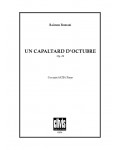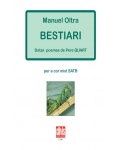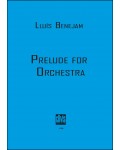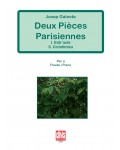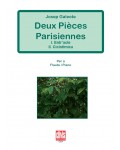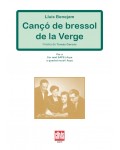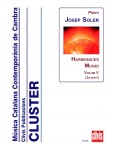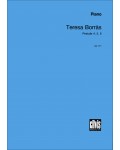
No products
Prices are tax included
Product successfully added to your shopping cart
There are 0 items in your cart. There is 1 item in your cart.
- English
- Castellano
- Català
Sheet Music There are 617 products.
Subcategories
-
Un Capaltard d'octubre (Cor i piano)
Edition: PrintedUn capaltard d’octubre (An October Evening) is a seven-minute work which expresses the gradual process of someone venturing confidently into the heart of nature in search of their inner world. The text comes from the first part of Tarda i Vespre (Afternoon and Evening), a poem in four sections written by Màrius Torres in 1941.
6,40 € -
Un Capaltard d'octubre (Cor i piano)
Edition: DigitalUn capaltard d’octubre (An October Evening) is a seven-minute work which expresses the gradual process of someone venturing confidently into the heart of nature in search of their inner world. The text comes from the first part of Tarda i Vespre (Afternoon and Evening), a poem in four sections written by Màrius Torres in 1941.
5,20 € -
Bestiari (12 poemes de Pere Quart)
Edition: DigitalThese pieces have been written with an unusual language of Manuel Oltra, making them unique; over the years have gained a great recognition by the best choirs in Catalonia.
18,15 € -
-
-
-
Deux Pieces Parisiennes
Edition: PrintedDeux pièces Parisiennes is a homage to the inner world and the intellectual curiosity of Livia Gallignani, a graduate in history of theatre, music and dance from the University of Ferrara and the composer’s partner.
16,00 € -
Deux Pieces Parisiennes
Edition: DigitalDeux pièces Parisiennes is a homage to the inner world and the intellectual curiosity of Livia Gallignani, a graduate in history of theatre, music and dance from the University of Ferrara and the composer’s partner.
11,17 € -
Cançó de bressol de la Verge. Choir & Harp
Edition: PrintedLluís Benejam dedicated this work to the Quartet Filharmonia (1946-1957) formed by Emilia and Núria Quer, Francesc Paulet and Enric Climent, the latter was also the founder of Clivis Publicacions. The Filharmonia Quartet performed it in numerous concerts with harpist Rosa Balcells.
6,00 € -
Cançó de bressol de la Verge. Choir & Harp
Edition: DigitalLluís Benejam dedicated this work to the Quartet Filharmonia (1946-1957) formed by Emilia and Núria Quer, Francesc Paulet and Enric Climent, the latter was also the founder of Clivis Publicacions. The Filharmonia Quartet performed it in numerous concerts with harpist Rosa Balcells.
4,90 € -
Harmonices Mundi - Vol. 5 2ª Part
Edition: PrintedHarmonices Mundi deals with the fugue in all its possibilities, often on its own, but also with preludes, associated to dances or within a partita. In this volume, the first five fugues are presented directly (in three or four voices) and it is only in the last piece that the fugue is presented with a prelude.
16,00 € -



